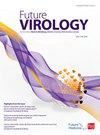A plain language summary of the Janssen COVID-19 vaccine effectiveness and safety as a single dose and with a booster
IF 1.4
4区 医学
Q3 VIROLOGY
引用次数: 0
Abstract
Summary This is a summary of the results of 2 global clinical studies of the Janssen Ad26.COV2.S vaccine against COVID-19. The ENSEMBLE study looked at the effectiveness of a single injection of the vaccine. The separate ENSEMBLE2 study looked at the effectiveness of a booster dose of the vaccine given 2 months after the first dose. In both studies, people received either the vaccine or a placebo. Vaccine effectiveness was evaluated 14 and 28 days after vaccination to allow sufficient time for generation of an immune response. In ENSEMBLE, compared to the placebo, a single dose of the vaccine prevented: 56% of moderate to severe-critical COVID-19 cases occurring at least 14 days after vaccination 53% of moderate to severe-critical COVID-19 cases occurring at least 28 days after vaccination 75% of severe-critical COVID-19 cases occurring at least 28 days after vaccination 76% of people with COVID-19 from needing to be hospitalized for treatment 83% of COVID-19–related deaths The vaccine continued to work well for at least 6 months after a single vaccine injection. In ENSEMBLE2, compared to the placebo, a single dose of the vaccine followed by a booster dose 2 months later prevented: 75% of moderate to severe-critical COVID-19 cases occurring at least 14 days after booster vaccination 100% of severe-critical COVID-19 cases occurring at least 14 days after booster vaccination In ENSEMBLE2, there were too few cases of COVID-19 to estimate vaccine effectiveness for preventing COVID-19–related deaths or hospitalization. ENSEMBLE2 was done during early 2021, when several COVID-19 vaccines became available by emergency use authorization. For ethical reasons, people could check whether they had received vaccine or placebo and decide whether they could be vaccinated outside of the study. This meant that the researchers could not look at the long-term effectiveness of the vaccine. In both studies, after receiving the vaccine, some people experienced pain at the injection site, headache, tiredness, muscle pain, and nausea. In most cases, these were mild and went away within a few days. Serious side effects were very rare. In ENSEMBLE, blood clots, seizures, hives, and ringing in the ears were more common in the people who got the vaccine than in those who got the placebo. These side effects were very rare. In ENSEMBLE2, bleeding, hives, and ringing in the ears were slightly more common in people who got the vaccine than those who got the placebo. In ENSEMBLE2, blood clots were more common in people who got the placebo. At the time of the study, it was not clear if these side effects were caused by the vaccine. The vaccine was effective at protecting against moderate to severe-critical COVID-19 at 14 days after a single injection. Effectiveness was increased by a booster injection given 2 months after the first injection. You can find more detailed information and references in the original articles. Links to these articles can be found at the end of this summary. Clinical Trial Registration: NCT04505722 and NCT04614948 ( ClinicalTrials.gov )杨森COVID-19疫苗单剂和加强剂的有效性和安全性的简明语言总结
摘要这是针对新冠肺炎杨森Ad26.COV2.S疫苗的2项全球临床研究结果的摘要。ENSEMBLE的研究着眼于单次注射疫苗的有效性。ENSEMBLE2的另一项研究考察了第一剂疫苗接种后2个月接种加强剂疫苗的有效性。在这两项研究中,人们要么接种了疫苗,要么服用了安慰剂。在接种疫苗后14天和28天评估疫苗有效性,以便有足够的时间产生免疫反应。ENSEMBLE与安慰剂相比,单剂疫苗预防:56%的中重度新冠肺炎病例在接种疫苗后至少14天发生53%的中重度新冠肺炎病例在接种后至少28天发生75%的重度新冠肺炎病例在接种了疫苗后至少28天后发生76%的新冠肺炎患者无需住院治疗83%的新冠肺炎相关死亡单次注射疫苗后,疫苗至少在6个月内继续有效。在ENSEMBLE2中,与安慰剂相比,单剂疫苗2个月后接种加强剂预防了75%的中重度新冠肺炎病例在加强针接种后至少14天发生100%的重度新冠肺炎病例在加强疫苗接种后至少十四天发生,新冠肺炎病例太少,无法估计疫苗预防新冠肺炎相关死亡或住院的有效性。ENSEMBLE2是在2021年初完成的,当时几种新冠肺炎疫苗已获得紧急使用授权。出于伦理原因,人们可以检查自己是否接种了疫苗或安慰剂,并决定是否可以在研究之外接种疫苗。这意味着研究人员无法观察疫苗的长期有效性。在这两项研究中,接种疫苗后,一些人出现注射部位疼痛、头痛、疲劳、肌肉疼痛和恶心。在大多数情况下,这些症状都很轻微,并在几天内消失。严重的副作用非常罕见。在ENSEMBLE,接种疫苗的人比接种安慰剂的人更常见血栓、癫痫发作、荨麻疹和耳鸣。这些副作用非常罕见。在ENSEMBLE2中,接种疫苗的人比接种安慰剂的人更常见出血、荨麻疹和耳鸣。在ENSEMBLE2中,血栓在服用安慰剂的人中更常见。在进行研究时,尚不清楚这些副作用是否是由疫苗引起的。单次注射后14天,该疫苗在预防中重度新冠肺炎方面有效。在第一次注射后2个月进行加强针注射可提高疗效。您可以在原始文章中找到更详细的信息和参考资料。这些文章的链接可以在本摘要的末尾找到。临床试验注册:NCT04505722和NCT04614948(ClinicalTrials.gov)
本文章由计算机程序翻译,如有差异,请以英文原文为准。
求助全文
约1分钟内获得全文
求助全文
来源期刊

Future Virology
医学-病毒学
CiteScore
4.00
自引率
3.20%
发文量
84
审稿时长
6-12 weeks
期刊介绍:
Future Virology is a peer-reviewed journal that delivers essential information in concise, at-a-glance article formats. Key advances in the field are reported and analyzed by international experts, providing an authoritative but accessible forum for this ever-expanding area of research. It is an interdisciplinary forum for all scientists working in the field today.
 求助内容:
求助内容: 应助结果提醒方式:
应助结果提醒方式:


